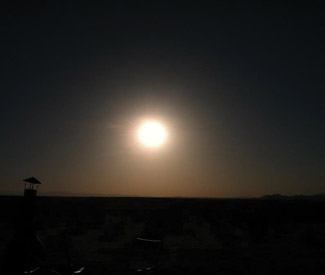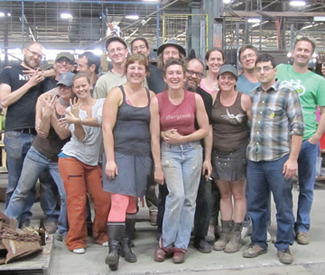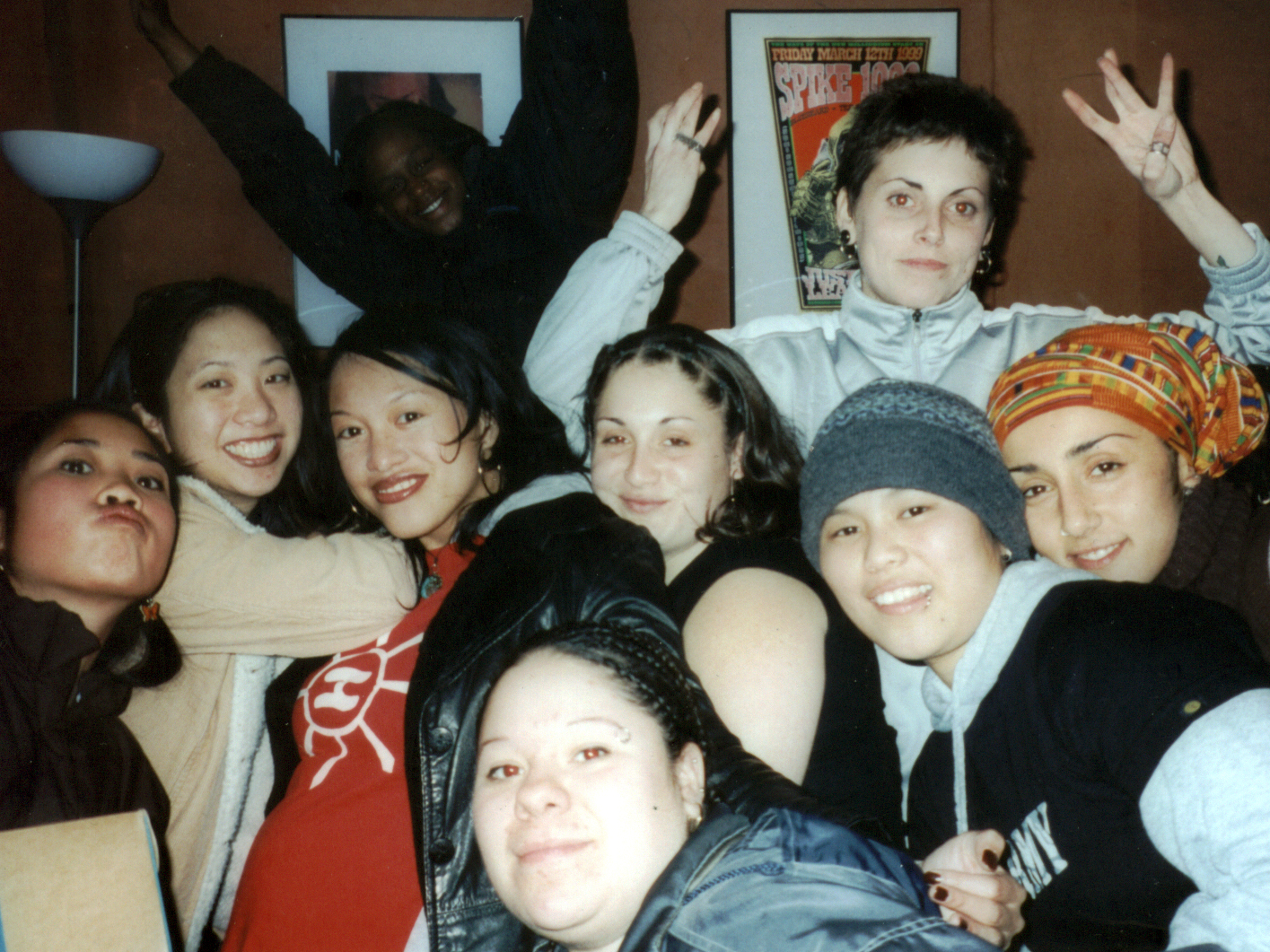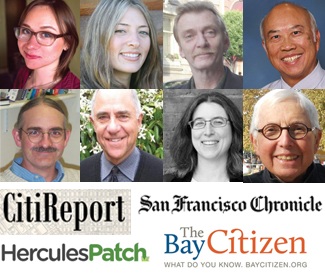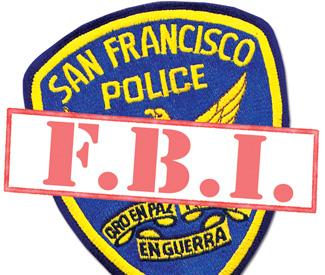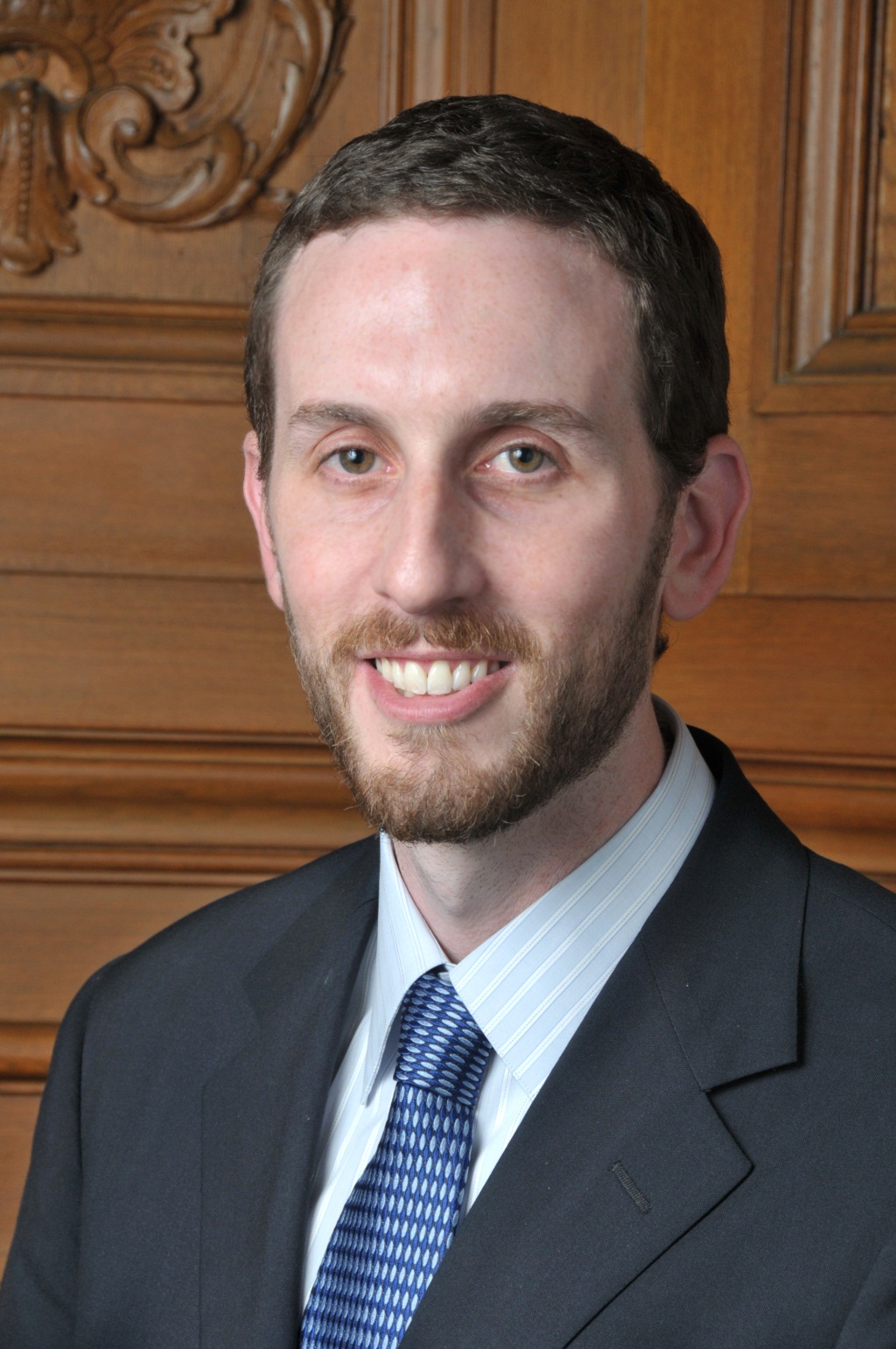Elsbern answers Impertinent Questions from B3 and James Chaffee (Scroll down)
First off, to your reference about still looking for me at Que
Syrah, or one of the other great West Portal establishments, you have been
saying this to me repeatedly for a long time now. Initially, it was a bit
funny, a nice little inside joke (although since you post on your blog our
e-mail exchanges, not so “inside”) between a couple of people who really do
not see eye to eye on many issues.
However, as you continued to perpetuate
this inside joke, it transitioned from being a bit funny, to a bit odd. If
you’d like to meet with me, let’s schedule a time. Thus far, you have only
offered Que Syrah’s happy hour time, which I have explained to you, on at
least two occasions, does not work for me as it is a weeknight immediately
after work – a time I reserve for my wife and son. I can meet with you
during the day most week days, or later in the evening after I put my son
to bed
Now, if I am wrong here, and just misreading your intentions by
misunderstanding the tone in your e-mails, I apologize. I know you are a
journalist and like to write, but maybe we would do better if you picked up
the phone and called me rather than solely initiating communication with me
by e-mail. If it is simply your intent to catch me in the act of enjoying a
meal on West Portal, I plan on having breakfast there this Saturday at 8:00
am at the Village Grill with my son – come join us if you’d like, although
to warn you, breakfast with a 3 year old is not necessarily that conducive
to a productive policy discussion. (B3: Sorry I couldn’t make your date but let’s reschedule. I didn’t phone because I wanted your reply in writing and on the written record.)
Second, congratulations to you on the sale of the Guardian and the
associated real property, assuming the recent media reports are true. I am
thrilled that the economic climate in San Francisco is allowing you to make
a little bit of money. As an aside, I hope you complete the real estate
transaction before the November election; there is a proposed property
transfer tax increase on the November ballot that could hamper your
profits. B3: As a small business, the Guardian pays high business and property taxes.
We don’t get Twitter type tax breaks nor friendly PG&E/Recology monopoly concessions. And we are annoyed
that the wealthy individuals and businesses intown are shifting more and more taxes to small businesses and residents,
I hope you can work on this.
Third, on to the Chaffee letter and his points. I do agree with his
point that what happened on Tuesday has happened before. In fact, on March
8, 2011, at a meeting of the full Board of Supervisors, the full Board was
asked to approve the nominations of the Rules Committee for three seats on
the Citizen’s Committee on Community Development. Nicole Rivera was one of
the 3 nominees approved by the Rules Committee; Charles Scianmas applied
and appeared before the Rules Committee, but was not put forward as one of
the 3 nominees. At the full Board meeting, Supervisor John Avalos moved,
with Supervisor David Campos seconding the motion, to remove Ms. Rivera and
replace her with Mr. Scianmas. The full Board approved this motion to
amend (Avalos, Campos, Chiu, Kim, Mar, and Mirkarimi voting aye), and then
appointed Mr. Scianmas. They did all this without taking any public
comment on Supervisor Avalos’s motion. This is the exact same process
Supervisor Weiner used when he moved to amend the item on Tuesday.
Refresh my memory – did you write Supervisor Avalos an e-mail asking
him why he did this after the March 8, 2011 Board meeting without taking
public comment? Did you contact any of the other five Board members who
voted for this motion without taking public comment first? Did you blog
about why the Board majority took this action without taking public
comment? Did the Guardian publish an article about why the Board took this
action without taking public comment? Or, in the converse, did the Guardian
trumpet this move by Supervisor Avalos because it liked the result?
Obviously, the point I am making is that you are criticizing a
process today because you simply do not like the outcome. If the outcome
was one of which you approved, I doubt very much you would be forwarding meMr. Chaffee’s letter. And, in fact, your past practice proves my point. B3: Your coup sabotaged the sunshine ordinance and task force on behalf of the Willie Brown gang and the boys and girls in the back room. It particularly galls me and others when it is done in violation of the spirit and letter of the city’s sunshine ordinance. Your vote for the developer’s shady last minute maneuvers on the Park Merced deal in your district is a good example.
Finally, to your general concerns about replacing the Sunshine Task
Force incumbents with new citizens, I believe Supervisor Weiner articulated
the need for this action quite well during the Board meeting. Frankly,
let’s be honest, if any other City Board, commission, or task force decided
to take it upon themselves, ignore every bit of City Attorney legal advice
and every known precedent under the Charter and Robert’s Rules of Order, to
take official actions even when a quorum is not present, the Guardian would
be critiquing, if not execrating said body and all of its members. Wait, I
take that back. If LAFCO took that action, it would probably get a pass
too.
Sincerely,
Sean
P.S. Please let me know if I should get a booth for two or three this
Saturday morning.
From: Bruce Brugmann <bruce@sfbg.com>
To: Sean Elsbernd <sean.elsbernd@sfgov.org>
Date: 05/24/2012 10:57 AM
Subject: On Guard: Some more questions on “The Return of Willie
Brownism to the sunshine task force”
Dear Sup. Elsbernd, (Chaffee letter below) I am still looking for you
at Que Syrah and this morning at the Manor and last week at the Village
Grill
I am now sending you a copy of an open letter from James Chaffee to the
board (dated Tuesday, May 22, the day of the 6-5 vote) that was done with
the intention in my view (and that of many others) of knocking out the
knowledgeable and experienced people from the task force and in effect
gutting the body. I would appreciate your comments on his points that the
maneuvering and his point that the the vote “was the perfect example of a
failure to follow the Sunshine Ordinance that led to the sort of problem
that it was intended to forestall.” Chaffee served with me as the chair
on the sunshine task force and was the chair. He is a longtime proponent
of open government. I would also appreciate any comments you have on the
bruce blog I sent you earlier, “The Return of Willie Brownism to the
sunshine task force.”
In short, why are you and Sup. Wiener and Farrell making this attack on
open government and the sunshine ordinance/task force.? Many thanks, b3
—– Forwarded Message —–
From: “James Chaffee” <chaffeej@pacbell.net>
To: “board of supervisors” <board.of.supervisors@sfgov.org>, “Carmen Chu”
<Carmen.Chu@sfgov.org>, “Christina Olague” <Christina.Olague@sfgov.org>,
“David Campos” <David.Campos@sfgov.org>, “David Chiu”
<David.Chiu@sfgov.org>, “Eric L. Mar” <Eric.L.Mar@sfgov.org>, “Jane Kim”
<Jane.Kim@sfgov.org>, “John Avalos” <John.Avalos@sfgov.org>, “Malia Cohen”
<Malia.Cohen@sfgov.org>, “Mark Farrell” <Mark.Farrell@sfgov.org>, “Scott
Wiener” <Scott.Wiener@sfgov.org>, “Sean Elsbernd” <Sean.Elsbernd@sfgov.org>
Cc: mpetrelis@aol.com, Pmonette-shaw@earthlink.net, “rita august”
<rita_august@msn.com>, hopeannette@earthlink.net, hgarfolocgj@yahoo.com,
dougcomz@mac.com, amwashburn@comcast.net, kimo@webnetic.net, “jay costa09”
<jay.costa09@gmail.com>, “ben rosenfeld” <ben.rosenfeld@comcast.net>,
grossman356@mac.com, smanneh@newamericamedia.org, han467@yahoo.com,
editorcitireport@gmail.com, “mother ed” <mother_ed@bigeds.com>,
missforties@hotmail.com, libraryusers2004@yahoo.com,
derekonvanness@aol.com, bruce@sfbg.com, rwhartzjr@sbcglobal.net,
karenrolph@hotmail.com, sotf@brucewolfe.net, “Richard Knee”
<rak0408@earthlink.net>
Sent: Wednesday, May 23, 2012 12:18:34 AM
Subject: Chaffee — Perfect Example, Sunshine Appointment Today
Dear Friends,
Today’s Board of Supervisor’s meeting included an item for approval of
appointments to the Sunshine Ordinance Task Force.
Supervisor Weiner moved to amend the motion to delete Bruce Wolfe from the
recommendation that was passed out of committee and replace him with David
Todd. That amendment passed.
As almost everyone knows, there is no public comment on a motion that was
heard at a committee. It has been accepted by the Supervisors in the past
and acknowledged by the City Attorney’s Office that if the motion that was
heard in committee is changed substantially so that what is being
considered no longer reflects what was passed out of committee, public
comment needs to be taken again. This is designed to give people time to
lobby the supervisors, or point out any mistakes, and not to be subjected
to surprises. As a matter of fact, it has been past practice for the
Supervisors to list the appointee’s names on the agenda. This is the first
time I have noticed it was not done. Is this another example of the
Supervisors hiding a proposed action to give them “flexibility.”
Yet the Supervisors passed the amended motion without taking public
comment.
As probably everyone but Scott Weiner knows, the Sunshine Ordinance at
§67.30(a) states that: “At all times the task force shall include at least
one member who shall be a member of the public who is physically
handicapped and who has demonstrated interest in citizen access and
participation in local government.”
Bruce Wolfe has been filling that requirement on the Task Force. Is David
Todd physically handicapped? What plan do the supervisors have to assure
that this requirement is fulfilled?
If there had been the required public comment, someone could have brought
it up? As a matter of fact, the idea for public comment is not just to
make the commenter feel better. The primary idea is that public decisions
will benefit from the collective wisdom of the citizens.
This is the perfect example of a failure to follow the Sunshine Ordinance
that led to the sort of problem that it was intended to forestall, namely
the Supervisors taking an action without being informed of what they are
doing. If Scott Weiner and David Chui and the rest of the crew did not
consider the citizens the enemy and exercise judgment about whether they
were complying with the spirit of open government rather than just shaving
off letter of the law as closely as possible, this could have been avoided.
Of course, I don’t know for a fact that Todd David is not physically
handicapped. I took a look at his application and he is self employed as
an investor, obtained a B.A. from Stanford in 1993, has never attended a
Task Force meeting, and left the statement of his qualifications blank. I
took a look at the video of the May 17, Rules Committee meeting and he had
no obvious physical handicap. It is easy to see why Scott Weiner likes
him; he said it would be a long road before he would go against the City
Attorney’s office, and when it came to constitutional law he would place
the City Attorney’s opinion above his own because the City Attorney is an
“expert.”
James Chaffee

